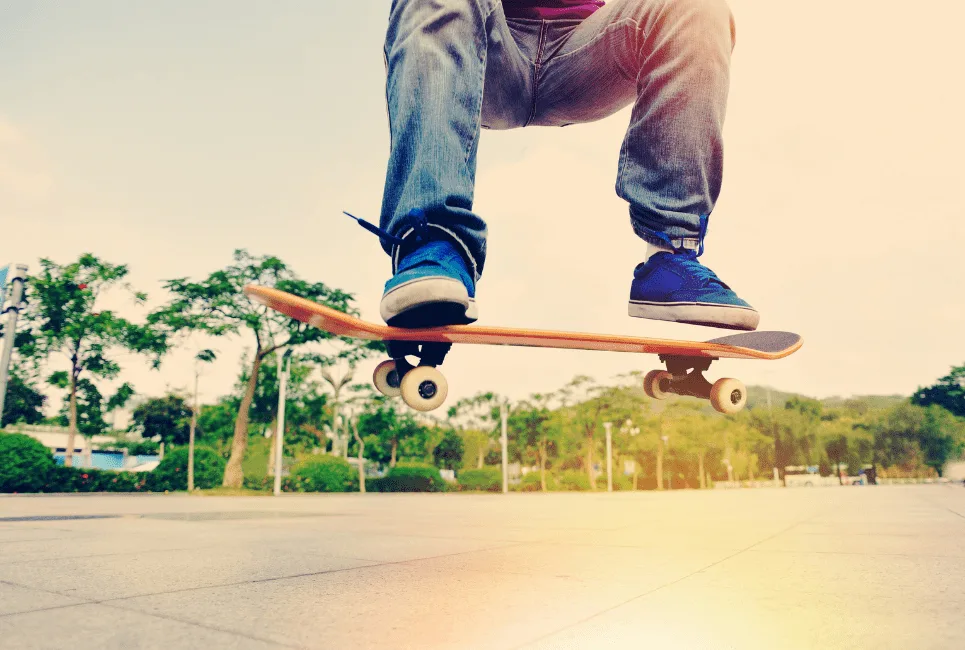- DGK Viper 8.125 Deck Review: An Overall Good Board - April 20, 2022
- Best Skateboard Bearings Guide: All You Need Consider - January 27, 2022
- Most Famous Old School Skateboarders - January 27, 2022
Skateboarding is a pastime that offers as much or as little as one desires from it. If you simply like riding around on a penny board or a cruiser, then you can do just that. Are you satisfied by knowing how to ollie? Well, that’s ok too.
Or you may be a skater who loves nothing more than adding to their repertoire of tricks and skills. We have to admit that we fall into the latter, there is nothing more satisfying than getting a trick that you have been trying to get relentlessly for days, weeks or even months.
However, this relentless attitude and need to succeed will only get you so far. If you don’t have the right technique, the trick may never happen and if you don’t have the right guidance, you won’t even know where to start.
So that’s why we have come up with a series of guides that will help you break down every small fragment of a trick, gradually work your way through the steps and eventually land the trick and ride off beaming from ear to ear.
In this guide, we take a look specifically at the BS and FS 180s. These are one of the best beginner tricks to get down not only because they look awesome. They also allow you to build up your confidence when rotating and will allow you to do variations of other tricks. Without further delay, here is our essential guide for BS and FS 180s.
What is a BS/FS 180?
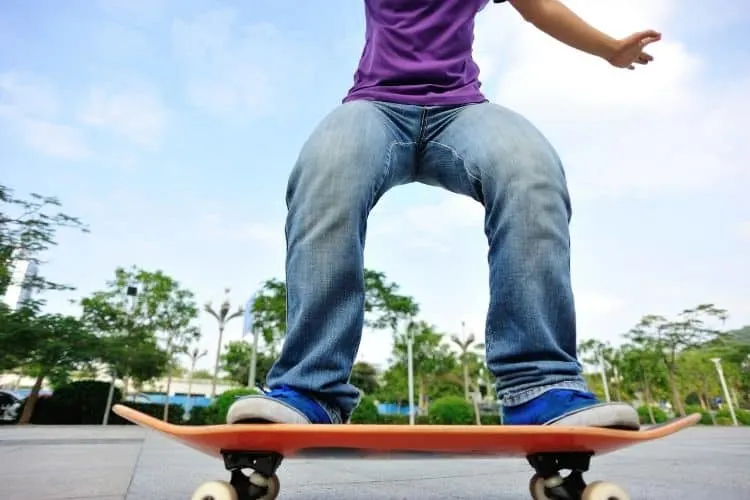
Well, firstly it is important to establish what frontside and backside are for those who are unaware. Frontside and backside refer to the direction in which the skater will rotate when they do the trick. It can also refer to the way the board spins even when the skater does not.
For example, the front side and back side shuv-it will determine the way the skater spins the board under their feet. So with regards to an FS or BS 180, this will decide if the skater turns left or right when spinning.
The frontside spin is when the skater turns their body right if they are goofy and left if they are regular. This is the easier of the two rotations as you turn in the direction that your body is facing and as a result, the board moves easier and you have full vision throughout the movement.
Backside is the direct opposite to this and asks the skater to turn the board in the direction your back is facing. Meaning that momentum is slightly against you and you will also not be able to see where you are landing as your head can’t turn fast enough, meaning your wheels are on the ground by the time you adjust.
Then as for the 180 aspect of this trick, it’s very self-explanatory. For the skater to complete the BS 180 or an FS 180, they will need to turn the board and themselves 180° or a complete half rotation, meaning that you’ll be riding away fakie if you complete this move correctly.
It is also considered a complete 180 if the skater lands on the nose and rotates the rest of the way around.
Are There Different Types of 180?
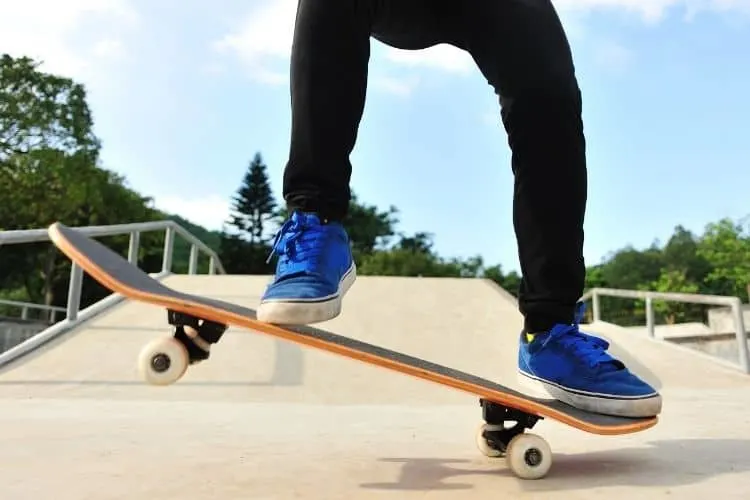
Yes, there are countless types of 180° rotation tricks. Just think of a legitimate skateboard trick and picture it with a half spin and we guarantee it will be counted as a legitimate variation. However, when we ask this question, we are specifically referring to half rotation ollies much like FS and BS 180s. Well, in any case, the answer is still yes.
There are a variety of different ways that these can be approached to make them more stylish and complex. Here is a rundown of all the different ways that you can do a 180.
Half Cabs: first off we have half cabs, this is when you do a front side or backside 180 ollie. However, when you attempt this trick, it is to be considered a half cab, you will need to be riding fakie when you do it. So this means that you will essentially be riding backwards on your board and will rotate then land in your normal stance.
This is a simpler or half variation of the trick made famous by Steve Caballero where he will do a full 360 rotation while riding fakie on the board.
180 Pivots: Then we have 180 pivots. These are 180 ollies where you land the half rotation either frontside or backside and when your board lands fakie, you put pressure on the nose of the board and either pivot straight back into your regular stance from the way you cam, or continue to rotate the body to complete a full 360° rotation.
This tends to be one of the steps on the ladder on the way to learning an FS/BS 360 where you rotate the board without ever touching the ground.
Nollie 180’s: Then lastly we have nollie 180’s. This is when you are riding in your normal stance and you pop a nollie instead of an ollie to lift you off the ground and facilitate the rotation.
For those unaware, a nollie is when you pop with the closest foot to the nose and then slide your dominant foot back to level out the board. Essentially like a reverse ollie movement. We would urge you to perfect your nollies before adding rotations as these can be very awkward at first.
What Tricks Do I Need To Know Before I Try BS/FS 180’s?
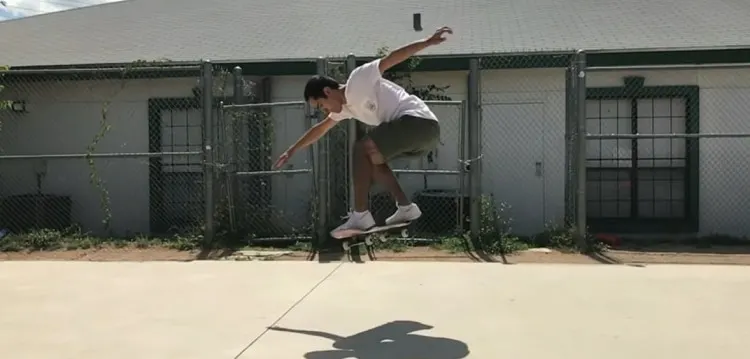
While the FS/BS 180 is a relatively simple trick that is ideal for beginners, there are several tricks that you should endeavor to know before you attempt this trick.
First and foremost, you absolutely need to be able to ollie, that is non-negotiable. Your ollies need to be confident, you need to be landing them regularly and ideally, they need to be high enough to clear small obstacles like curbs or another skateboard.
This will allow you to get enough air to rotate when you attempt to 180. If your ollies are too low, you may not have the ability to get the full rotation no matter how hard you try.
Another thing you need to be able to kickturn and turn your board comfortably, this allows skaters to know a little about the rotation process and how to open up your body to ensure the largest rotation.
Then there are a number of additional tricks that we would list as helpful but not strictly necessary. If you want to give these a try, we assure you, they will make the process of learning a 180 much more fluid. Check it out below:
- Do not comply
- Body Varials
- boneless
- Fakie big spins
How To BS/FS 180: A Guide
Ok so now that you know a little about this trick, the other tricks that can help you learn this one and the variations you can try, it’s time to walk through this trick step by step.
Firstly, what you’ll want to do is get yourself into the standard ollie position. This is the back foot on the tail of the board with the ball of your foot in the pocket, ready to put weight down and pop the board. Then the front foot is placed on or just before the front truck bolts with the toes in line with the front edge of the board.
Once you’ve got your position, you’ll want to get ready for an ollie, bend your knees about 90° and get ready to jump as you would for an ollie. However, the one difference you’ll want to exaggerate when learning this trick is the opening and winding of the shoulders.
Just keep these loose and as you pop the board, bring them from the wound position and swing them in the direction you want to turn, then simultaneously pop the ollie and take off.
How while in the air about half of the rotation will be taken care of by your shoulders. However, you will still need to take care of the rest with your feet. If you are going for a backside 180 you’ll want to pull your front foot back while pushing your back foot forward, then with a frontside 180, it’s the direct opposite.
It’s essentially moving your feet in tandem with your shoulders, allowing them to catch up and prepare for the landing.
Then you need to do the hardest part, land on the board. For this, you’ll need to unwind your body and return to that solid, square shoulder stance that is used for a standard ollie.
This will prevent you from rotating too far or losing balance when you come down. Then you’ll want to have the consciousness of mind to plant both feet firmly on the board, bend your knees to absorb the landing and then ride off feeling accomplished and smiling widely.
What are The Common Mistakes to Avoid?
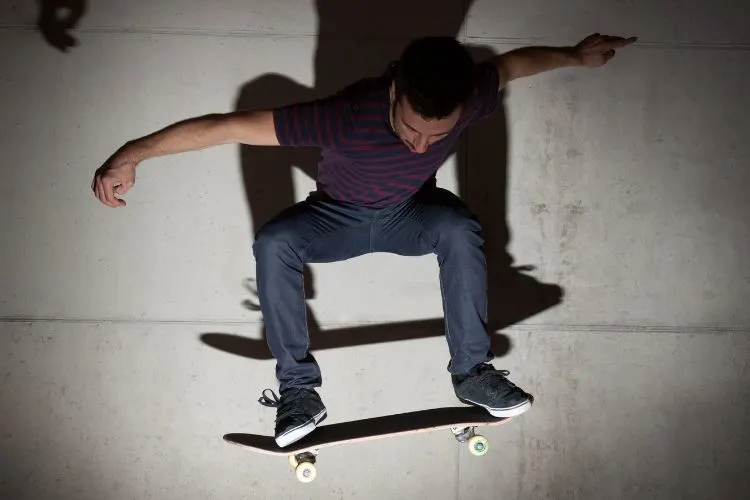
Not Doing Your ollie first
One of the most common issues that skaters have when doing this trick is that they overthink the rotation, try to do the rotation too early, forget to go through the process of an ollie. Then before they know it, the board doesn’t move as you planned, you do and this leads to a pretty bad tumble.
The best way to do this is to avoid breaking up the movement in your head. This trick requires one fluid set of movements. It might not happen or click immediately, but segmenting your movements won’t help proceedings.
Under/Over-Rotating
Another issue is that Skaters may under or over-rotate. If you are under rotating, the issue is that you aren’t committing to the twist enough and the best remedy for this is to really accentuate the winding and releasing the body and shoulders when jumping.
However, if you are over-rotating, you may be doing this a little too much and forgetting to unwind and prepare for the landing. In this case, it’s about being in the moment and setting up for the end of the trick.
Moving Too Slow
Then lastly, this trick is one of those that you simply can’t learn well if you are learning it from a static position, or indeed, moving at a snail’s pace.
To land a 180 competently, you need to be moving at a reasonable pace as this will give you the momentum that you need and can manipulate to get your board to do what it needs to do. So give yourself one or two good pushes before each attempt.
What is the Biggest Rotation on Record?
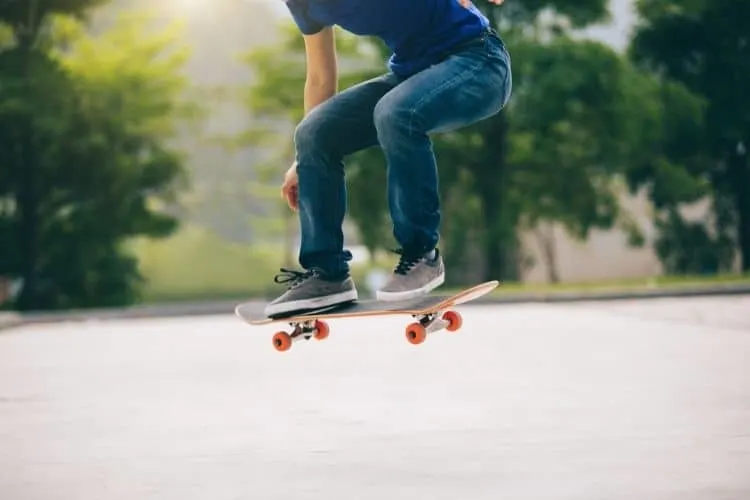
The skateboarding community and its pros were all aiming to land the first-ever 900, probably know, back in the 1990s. The skating legend did eventually land this iconic trick back at X-Games V back in 1999 and in doing this became the first skater to do so and broke the record for the biggest rotation on a skateboard.
However, since this famous day in skateboarding, there have been two events that would smash Tony’s record. One was recorded by Mitchie Brusco in 2016, who still officially holds the record for the most rotations on a skateboard.
Mitchie managed to perform a staggering 3 and a half rotations to land at 1260 during a competitive event at the X-Games in 2019. However, this was performed on a mega ramp and for that reason, many skateboarding purists suggested that this wasn’t a true bettering of Tony Hawk’s 900.
So in stepped a twelve-year-old wonder kid (Eleven at the time) named Guy Khury who managed to go one-half rotation better than Hawk, landing at 1080° rotation during the X-Games vert competition in 2020.
This made Guy the youngest gold medalist in X-games history and the new record holder for most rotations on the vert ramp. Not bad for one day’s work.
The New Spin on Things
As you can see from the above information, the FS/BS 180 is a very doable trick and more importantly, it’s the foundation of all rotated trick variants, making it a very important trick to learn too.
We hope this guide helps you understand more about this trick, allowed you to try it out and land it and maybe you can try out some of the other variations of this trick too. So get out there, wind up those shoulders and spin as you touch the sky.
FAQs Section
If you have reached the end of this guide and you still have some pressing skateboarding questions, maybe our FAQ section will clear up some of those issues. Check it out below:
Answer: Why, he’s one of the founding fathers of vert skateboarding and the reason why you call fakie rotations Caballerials and half cabs, because he invented them. Steve Caballero was one of the skaters that belonged to the Bones Brigade was of skateboarding.
Steve was known best for his crazy air variations, his ability to create and do tricks that no one had even thought of their head and also once the holder of the highest recorded air on a half-pipe, a record that was stolen by Danny Way in 1997.
Steve rode for Powell Peralta, which was sponsored by Vans, Independent, Bones and the Ohana Boardshop. Steve is now 56 years old but he still tears it up on the regular. In fact, just a few days ago at Tony Hawks Vert Alert, there was a demo by some of the older pros from the nineties, including Caballero.
In this demo, he landed his first Caballerial in over ten years. If you haven’t seen that, you need to go check it out. In short, Steve is a legend of the sport. No wonder Thrasher named the guy skater of the century.
Answer: While Tony Hawk made it very clear he had in the real interest in Pursuing any more rotations, Tony would occasionally pull out his party trick over the next twenty or so years. He has done it three more times, the first at an event launching the underwhelming Tony Hawk’s: Ride video game.
The second was in 2011 and when he did this, he posted the footage to Twitter. Then the last was in 2016 at the age of 48 and upon doing this trick, Hawk said that it would almost certainly be the last 900 and would ever land.
Tony has continued to skate and has been quoted saying that he would never stop and that he would skate until his body would no longer let him. He has continued to put out content from his own ramp, often posting clips of impressive vert tricks.
Occasionally, the 90’s icon will break out a gnarly trick that you would think is out of reach for a man in his fifties. However, he grants that the more impressive vert tricks of his golden era are now sadly out of reach.
Answer: This is a question Subjective with a plethora of answers That Could be easily Considered the truth. However, if you made us choose just one, in our eyes it would have to be Bob Burnquist’s run at the 2001 X-Games.
Bob was competing in the Vert category as he is known for the best and was up against it going into his final run. He was trailing to Bucky Lasek, a man who had just put down one of the best runs of the night, he had recorded the highest X-Games score in history in 2000, and was set for a third gold in succession.
To win the competition, Bob would have to pull out a seamless run and a very difficult one too. So Bob did just that. The run that he put together was a chain of tricks that blew everyone in attendance away.
Some of the tricks had never been seen before. The crowd was in a frenzy, the run was flowing and the commentary team was losing their minds and their voices. It’s one of those runs that words simply can’t do justice, just do yourself in favor and look it up. You won’t be disappointed.
So that is our guide explaining most people’s first skateboarding trick, the FS/BS 180. What did you make of this guide? Was this helpful and informative for you? Are there any other skateboarding guides that you would like to see in the future? Let us know in the comments section below and as always, thank you for reading Skate Culture Insider.
Looking for more? Check out:

